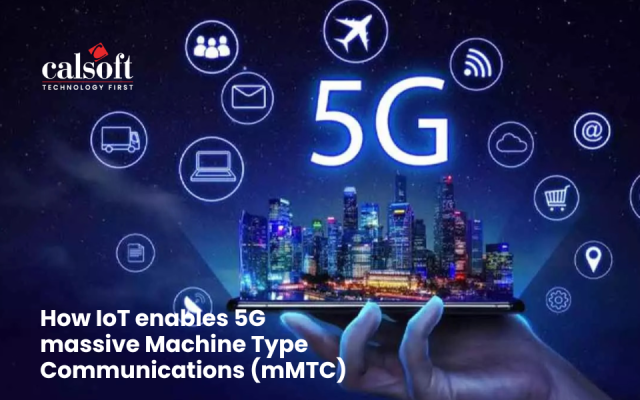In the coming years, the world will witness the actual capabilities of 5G in industrial and enterprise applications. The most demanding aim for mobile network operators is to extend the network for millions of IoT nodes than smartphone devices. The IoT sector served by mobile communication networks can be categorized as massive IoT (mIoT), critical IoT, Broadband IoT, and Industrial IoT (IIoT).
These cellular IoT sectors include use cases that demand higher throughput, lower latency, and larger data volumes. Even though these use cases do not require high-speed 5G performance, however, they have stringent power and cost requirements, emphasizing low latency across a wide range of applications. That’s where the innovative 5G RedCap standard becomes important!
Read the blog to explore the significance of 5G RedCap for massive IoT adoption.
What is RedCap – 5G NR Light?
5G technology has been designed to connect millions of different devices (sensors) as well as machines (drones, robots, vehicles) to the global-scale IoT network. 5G supports multiple use cases with diverse requirements such as enhanced Mobile Broadband (eMBB), massive Machine Type Communication (mMTC), and ultra-Reliable Low Latency Communication (uRLLC). However, it became necessary to support various applications existing between these extremes.
Third Generation Partnership Project (3GPP) Release 15 to 18 drives the 5G expansion for IoT. 3GPP Release 15 to 17 focuses on the unified and scalable air interface 5G New Radio (NR) to support the coexistence of a wide range of 5G device categories. 5G innovations for IoT support a broad set of devices for all spectrum bands (low/mid and high bands) and types (licensed/unlicensed and shared spectrum).
- Release 17 introduces 5G NR Light or 5G RedCap (Reduced Capability) bringing new capabilities for IoT such as optimized power consumption, reduced cost, and coverage recovery through side links.
- 5G RedCap is more capable than narrowband-IoT (NB-IoT) and LTE Category M1 (Cat M1), by providing a throughput of 150Mbps downlink and 50 Mbps uplink.
- 5G RedCap becomes more suitable for IoT applications that demand continuous data transfer, low data rate, low cost, and efficient power consumption.
| Parameters | 5G | RedCap | mMTC LTE Cat-M |
| Bit Rate | >1Gb/s | ~85Mb/s | 1Mb/s |
| Bandwidth | 100 MHz | 20MHz (<5 MHz in Rel18) | 2 to 5 MHz |
| Number of Antennas | 2 to 4 | 1 to 2 | 1 |
| Modulation Scheme | 256 QAM | 64 QAM | 16 QAM |
Reduced Capability means Wider Applicability in various use cases/applications in industrial IoT, enhancing industry 4.0 transformation with Private 5G. RedCap and Private 5G facilitate cost-effective deployments tailored to enterprise and industry verticals. 3GPP Release 16 and 17 comprise positioning enhancements such as 3D positioning, cm-level accuracy, reducing positioning latency, and enhancements in reliability in specific areas like Vehicle-to-Everything (V2X) and factory positioning, benefiting industrial applications.
In the coming years, the demand for 5G RedCap will be significantly high in the market as it brings more innovations to the IoT sector. 5G can extend its capabilities in additional markets such as agriculture, construction, retail, manufacturing, and more. 3GPP Rel 18 introduces enhanced RedCap (eRedCap) which can support the next wave of 5G evolution. RedCap supports a single network, i.e., a 5G Standalone Network comprising both a Radio Access Network (RAN) and a Core Network (CN). With RedCap features, 5G can drive intelligent edge connectivity to boost reliability and network efficiency.
In a Nutshell
In the future, 5G RedCap can enhance more connections to streamline the integration of 5G in various IoT applications. The reduced capability in 5G promises enhanced data rate, low latency, and high speed to drive cost-effective IoT applications. RedCap services ensure robust wireless connectivity and seamless mobility, underpinning a wide range of use cases that have huge market potential.
References
[1] Nir Shapira, “How RedCap fits into 5G and IoT”, 5G Technology World
[2] Hanumant Pawar, “Big Role for 5G RedCap in 5G Evolution, Massive IoT Adoption”, Counterpoint
[3] 5G NR-Light (RedCap): Revolutionizing IoT, Qualcomm






